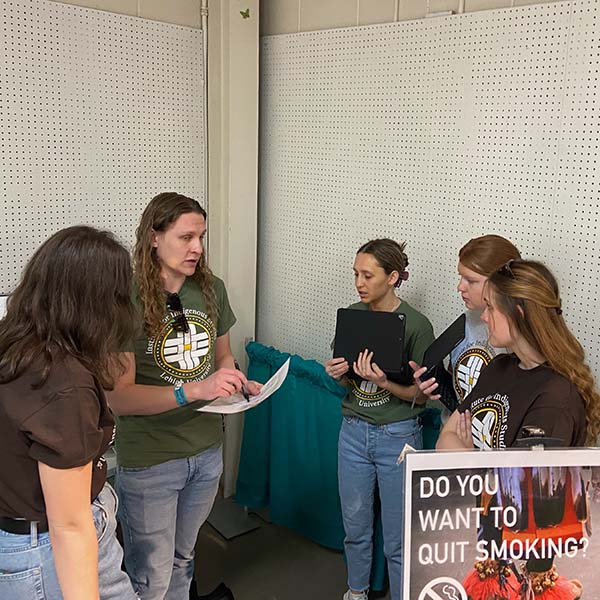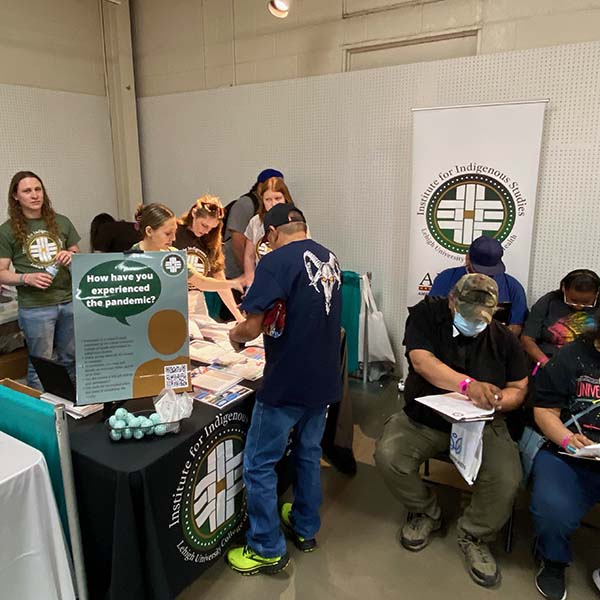Our culture shapes our health as does the community in which we reside. While those are not the only factors that impact our health outcomes, they can be powerful determinants.
The researchers and scholars in the Institute for Indigenous Studies (IIS) in the College of Health know that life on a reservation is rife with health challenges.
Indigenous people face inflated rates of alcohol and substance abuse, foster care, disabilities, health disparities, and racial and sexual discrimination.
“Indigenous people are dead last in just about every public health category,” says Sean Daley, director, IIS, and associate professor. “Why that is the case is the million-dollar question. It could be failed treaties, forgotten history, an isolating reservation system, the lack of political capital, and failure to advocate and lobby. But several centuries of sustained crisis still prevails to this day.”
As he and the team at IIS know, focusing on the negative is too easy.
IIS is working to find inroads to assist 574 separate nations that vary in culture, religion, and language. They are doing that through partnerships and collaborations with Indigenous peoples, nations, communities, and organizations. Their goal is to improve the physical, mental, emotional, and spiritual well-being of Indigenous peoples.
Some of that work is gaining traction as IIS attempts to mitigate the stress that impacts public health in tremendous ways.
 Tobacco
Tobacco
Smoking the peace pipe is a Hollywood creation. But tobacco plays a real role in many Indigenous religious ceremonies. Smoke helps bring prayers to the creator. So respecting sacred tobacco is an important message.
But the public service message over the last six decades is clear: Tobacco is harmful. While a push to curb smoking has worked for most other groups in the United States, it just seems to create confusion with Indigenous peoples, for whom smoking rates remain high — those rates actually have grown for Indigenous peoples as rates have fallen for other races and ethnicities.
IIS operates a 12-week smoking cessation program. Of course, the goal is to curb smoking, but it opens doors to other more meaningful topics.
“We can talk about stress and historical trauma that nicotine helps alleviate,” says Jason Hale, senior research scientist at IIS and an enrolled member of the Prairie Band Potawatomi Nation of Kansas.
As people work to quit smoking, food can often become a substitute.
“Over the program we can also talk about nutrition, diabetes, and weight loss,” he says. “Some topics are sensitive and personal, which can close people off when addressed directly. Using tobacco as the way in, people are more open to conversations and potential alternatives.”
Hale makes clear that blaming a person for their choices is very off-putting when the social factors that led to that choice are important considerations.
 COVID-19
COVID-19
Social factors played a part in how Indigenous peoples responded to COVID-19. Oftentimes the policies — federal, state, tribal, and local — were confusing and contradictory.
Not only were Indigenous people underrepresented in COVID-19 research, they were disproportionately impacted by the pandemic: three and a half times more infections, four times more hospitalizations, and three and a half times more deaths. These impacts are directly tied to the preexisting health disparities on reservations.
IIS recruited nearly 400 Indigenous people to complete a knowledge, attitude, beliefs, and behaviors survey and then conducted 47 participant interviews. Transcribing, coding, and analyzing those interviews was Caitlin Haas ’22, research associate at IIS.
“We sought to understand how they managed during the pandemic and navigated the restrictions,” says Haas.
The team presented its research findings at the Society of Applied Anthropology Annual Meeting.
Some Indigenous people were not allowed to leave their reservations and faced curfews. Such preventative methods often were triggers, as they mimicked past federal governmental policies designed to assimilate Native Americans.
“To adhere to those restrictions often meant reckoning with historical trauma,” says Haas. Such reckonings are never easy and often compound personal health if the coping method is negative.
“While people struggled with a variety of mental health issues made worse in isolation, many Indigenous people relied on their tribal traditions to cope with the stress of extended isolation,” says Daley. “Learning traditions, having cultural understanding, and providing tribe-specific education on topics can all make a big impact on public health.”